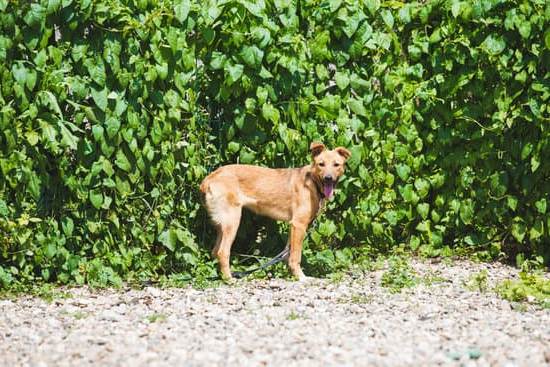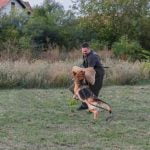When it comes to duck hunting, having a well-trained duck dog can make all the difference. These four-legged partners not only enhance the hunting experience but also provide numerous benefits for hunters. In this introductory section, we will explore the importance of training a duck dog and how it can improve your success in the field.
A trained duck dog is invaluable for several reasons. First and foremost, they are reliable retrievers, which means they can efficiently retrieve downed ducks from water or land. This saves hunters both time and effort, allowing them to focus on their shooting skills and maximizing their chances of success. A well-trained duck dog can also track wounded ducks that may have otherwise been lost, making sure no bird goes to waste.
In addition to their retrieving abilities, a trained duck dog enhances the overall hunting experience. Their presence adds excitement and companionship to the hunt, making it more enjoyable for both the hunter and the dog. Moreover, a properly trained duck dog understands obedience commands, such as staying quietly in a blind or boat until given permission to retrieve. This enables hunters to remain concealed while waiting for incoming ducks without scaring them away.
Training a duck dog is not just about creating a useful tool; it is an essential part of building trust and partnership between the hunter and their furry companion. The process of training strengthens the bond between human and animal while instilling discipline and control in both parties. It is a rewarding journey that requires time, patience, and commitment but ultimately results in an extraordinary partnership on every hunting adventure.
Breeds of Dogs Suitable for Duck Hunting
Duck hunting requires a specific type of dog that is well-suited for the job. There are several breeds that excel in duck hunting due to their strengths, characteristics, and instincts. When choosing a breed for a duck dog, it is important to consider their natural abilities and traits that make them suitable for this specific type of hunting.
There are various breeds commonly used for duck hunting, each with its own unique set of qualities. Labradors Retrievers are one of the most popular choices for duck hunting. They have a strong retrieving instinct and a love for water, making them excellent swimmers and retrievers.
Chesapeake Bay Retrievers are another common breed used for duck hunting. They have a thick waterproof coat and can tolerate cold water temperatures well. Golden Retrievers are also known for their excellent retrieving skills and gentle personalities.
When selecting a breed for duck hunting, it is important to consider certain traits that make them suitable for this type of hunting. A good duck dog should have a strong sense of smell, as they will be relied upon to track down wounded or downed birds in dense vegetation or water.
They should also be natural swimmers, as they will often need to retrieve ducks from bodies of water. Trainability and obedience are also key traits to look for in a breed, as this will make training them much easier.
In comparing different popular duck dog breeds, it is important to consider factors such as size, temperament, and energy levels. Some breeds may be better suited for beginners due to their ease of training and calm temperaments, while others may be better suited for experienced handlers who can handle more challenging or high-energy breeds.
Overall, when selecting a breed for a duck dog it is important to consider their natural abilities, characteristics, and temperaments that make them well-suited for this specific type of hunting. Labradors Retrievers, Chesapeake Bay Retrievers, and Golden Retrievers are just a few of the popular breeds commonly used for duck hunting. By choosing the right breed, hunters can have a reliable and capable partner by their side in the field.
Basic Obedience Training for Duck Dogs
Training a duck dog begins with establishing a solid foundation of basic obedience. This not only provides discipline and control but also sets the groundwork for more advanced training in the future. Here is a step-by-step guide to teaching basic obedience commands to your duck dog:
- Start with Sit: Teach your dog to sit on command by holding a treat close to their nose and slowly moving it upwards while saying “Sit.” As their head goes up, most dogs will naturally lower their rear end into a sitting position. Reward your dog with the treat and praise when they successfully sit.
- Introduce Stay: With your dog in the seated position, hold your hand out in front of them and say “Stay.” Take a step back, count to three, then return to your dog. If they remain in the sitting position, reward them with praise and a treat. Gradually increase the duration of the stay as your dog becomes more comfortable.
- Add Down: Once your dog has mastered sit and stay, introduce the down command. Hold a treat close to their nose and lower it towards the ground while saying “Down.” As they follow the treat, their body should naturally lower into a lying-down position. Reward and praise them when they successfully lie down.
The significance of basic obedience cannot be overstated when it comes to training a successful duck dog. These foundational commands ensure that your dog not only understands how to obey instructions but also considers you as their leader. This is crucial for maintaining control in potentially high-stress hunting situations.
By patiently teaching these basic obedience commands, you are setting both yourself and your duck dog up for success in all aspects of training and hunting.
Next up: Retrieving Techniques and Skills.
Retrieving Techniques and Skills
When it comes to training a duck dog, one of the most crucial skills to focus on is retrieving. A well-trained duck dog should excel at retrieving ducks and other waterfowl both on land and in water. In this section, we will explore the fundamentals of teaching a duck dog to retrieve, as well as some training exercises and drills that can help improve a dog’s retrieving skills.
To begin with, it’s important to understand that the key to successful retrievals lies in positive reinforcement. Dogs are naturally inclined to retrieve, but they need proper guidance and encouragement to do so effectively. Start by introducing your dog to the concept of retrieving using basic objects like bumpers or dummies. Begin on land, tossing the object a short distance and encouraging your dog to bring it back.
Once your dog has grasped the basics of retrieving on land, you can gradually introduce them to water retrieves. Start with shallow water and gradually progress to deeper areas as their confidence grows. Use an encouraging tone of voice and rewards such as treats or praise when they successfully retrieve the object from the water.
In addition to basic retrieves, there are several training exercises you can incorporate into your sessions to improve your dog’s skills. One useful exercise is called “back casting,” where you throw an object behind your dog so they have to turn around and find it without seeing where it landed initially. This helps develop their ability to mark fallen birds and remember their locations.
Another helpful drill is known as “cold blinds,” which involves setting up retrieves in areas where your dog has not seen any birds fall. This simulates real hunting scenarios where dogs have to rely solely on their handler’s directions and memory for finding downed birds.
By focusing on positive reinforcement and incorporating these training exercises into your sessions, you can help develop a strong foundation for your duck dog’s retrieving skills. Remember that patience and consistency are key when training a duck dog, and with continued practice and reinforcement, you’ll soon have a skilled retriever by your side on your hunting expeditions.
Introduction to Bird Training for Duck Dogs
Training a duck dog involves much more than just basic obedience commands. One crucial aspect of the training process is bird training. This section will explore the role of bird training in developing a successful duck dog, different methods for introducing birds to a dog during training, and tips on building a dog’s drive and enthusiasm for birds.
The Role of Bird Training
Bird training plays a vital role in teaching a duck dog to locate and retrieve ducks or other birds in the field. It helps them develop their natural instincts and enhances their natural hunting abilities. By exposing dogs to live birds during training, they learn how to track, flush out, and retrieve them.
Methods for Introducing Birds
There are several methods for introducing birds to a dog during training. One method is using dead birds as an initial introduction. Start by allowing the dog to sniff and interact with the bird while providing positive reinforcement. Gradually progress by throwing the bird short distances for the dog to retrieve.
Another method involves using live pigeons or quail, which can simulate the unpredictable movements of ducks or other waterfowl. This method requires careful supervision and control to ensure both the safety of the birds and effective training for the dog.
Building Drive and Enthusiasm
Building a strong bird drive and enthusiasm in a duck dog is essential for successful hunting. To enhance this drive, trainers can use decoys or scent devices that emit bird scents as part of their training sessions. By associating these scents with rewards like treats or praise, dogs learn to associate them with their desired behavior – locating and retrieving birds.
Consistency, repetition, and patience are key when it comes to building a dog’s enthusiasm for birds. Gradually increase difficulty levels by adding distractions or distance challenges during retrieving exercises to keep their drive high.
Gunfire Introduction and Desensitization
Introducing a duck dog to the sounds of gunfire and desensitizing them to it is a crucial aspect of their training. It ensures that the dog remains calm and focused in the field, even when surrounded by loud noises. This section will discuss the importance of acclimating a duck dog to gunfire, providing a step-by-step process for introducing them to it, and techniques for desensitization.
The Importance of Acclimating a Duck Dog to Gunfire
One of the primary reasons to introduce a duck dog to gunfire is for their safety. In hunting situations, firearms are often used, and if a dog reacts negatively or becomes frightened by the sound, it can put both themselves and their handler at risk. By gradually exposing them to gunfire during training sessions, they learn that it is nothing to fear.
Another reason for acclimating a duck dog to gunfire is for successful retrieves. When hunting waterfowl, shots are typically fired at flying birds. A well-trained duck dog needs to remain focused on the task at hand – retrieving ducks – even amidst the noise of gunshots. By introducing them properly to gunfire, they will associate it with positive experiences and understand that it signals an opportunity for retrieving birds.
Step-by-Step Process for Introducing Gunfire
Introducing gunfire should be done gradually and systematically so as not to overwhelm or scare the duck dog. Here are some steps you can follow:
- Start with distant noises: Begin by playing audio recordings of distant gunshots while engaging your dog in activities they enjoy, such as playing fetch or training exercises. This helps them associate the sound with something positive.
- Gradually increase proximity: Slowly decrease the distance between your dog and the source of the gunshot sounds over multiple sessions.
- Associate sound with reward: Each time you play the audio recording or fire a distant shot, reward your dog with treats, praise, or their favorite toy. This reinforces positive associations with the noise.
- Move outdoors: Once your dog is comfortable with the sound of gunfire from a distance, move to an outdoor location away from distractions. Start by firing a blank shotgun round and immediately rewarding your dog for remaining calm.
- Gradually increase exposure: Slowly increase the intensity of gunfire by firing live rounds from farther distances and closer proximity to your dog. Always reward them for maintaining their composure.
Desensitization Techniques
Desensitizing a duck dog to gun noises involves exposing them repeatedly to different firearm sounds until they no longer react fearfully or become overly excited. Here are some techniques to help desensitize your duck dog:
- Controlled environment: Begin desensitization in a controlled environment where distractions are minimal. Utilize a hunting blind or enclosed area where you can control the proximity of the gunshot sounds.
- Gradual exposure: Start by incorporating gunfire into training exercises that assume the normal routine of duck hunting scenarios. Begin with low-intensity sounds and gradually build up to louder ones over multiple sessions.
- Positive reinforcement: Reward and praise your duck dog consistently throughout the process to associate gunshots with positive experiences and feelings of safety.
- Consistency and repetition: Consistently expose your duck dog to gunfire during training sessions until they exhibit calm behavior in response to shots fired.
By following these steps and techniques, hunters can ensure that their duck dogs maintain focus, remain calm, and perform well in hunting situations where loud gun noises are prevalent.
Continue Reading.
Advanced Duck Dog Training
Duck hunting requires a well-trained and skilled dog to perform advanced tasks such as blind retrieves and marking. These specialized training techniques enhance the hunting experience, allowing the dog to retrieve ducks from unseen locations and remember multiple falling birds. In this section, we will explore the advanced skills needed for successful duck hunting and provide strategies for teaching a duck dog to perform blind retrieves and marking.
Blind retrieves involve sending a dog to retrieve a bird that it has not seen fall. This skill is crucial in situations where a bird lands out of sight, such as in thick vegetation or across bodies of water. To train a dog for blind retrieves, it is important to establish a strong foundation in obedience and retrieving skills.
Start by using familiar landmarks, such as trees or bushes, as visual cues to help the dog find the bird. Gradually increase the distance and difficulty of the blinds, gradually removing the use of visual cues until the dog can reliably retrieve birds from unseen locations.
Marking refers to a dog’s ability to remember where multiple birds have fallen during a hunt. This skill is particularly useful when hunting in groups or when several birds are shot in quick succession. To train a duck dog for marking, start by throwing multiple dummies or bumpers into an open area with clear sightlines.
Encourage the dog to watch each throw closely and mark where each dummy falls. Use positive reinforcement to reward correct marks and gradually increase the distance between throws. Over time, introduce obstacles or distractions that simulate real hunting scenarios, such as decoys or gunshots.
Training a duck dog for advanced skills like blind retrieves and marking requires patience, consistency, and regular practice. It is important to create realistic training scenarios that mimic actual hunting conditions as closely as possible. Incorporate waterfowl hunting elements into your training exercises, such as using decoys or introducing live birds during retrieving drills. By simulating real hunting scenarios, you can prepare your dog for the challenges it will face in the field.
To summarize, advanced duck dog training involves teaching dogs to perform blind retrieves and marking tasks. These skills are essential for successful duck hunting and can greatly enhance the overall hunting experience.
Through a combination of obedience training, positive reinforcement, and realistic training scenarios, dogs can be trained to confidently retrieve ducks from unseen locations and remember multiple fallen birds. With dedication and practice, you can develop a strong partnership with your trained duck dog that will undoubtedly lead to many successful hunts.
| Advanced Duck Dog Training: Blind Retrieves and Marking |
|---|
| – Exploring the advanced skills needed for successful duck hunting |
| – Training a dog to retrieve from unseen locations (blind retrieves) |
| – Strategies for teaching a dog to mark and remember multiple falling birds |
Hunting Scenarios and Real-Life Training
Training a duck dog goes beyond teaching basic obedience commands and retrieving skills. To truly prepare a duck dog for hunting, it’s important to simulate real-life hunting scenarios during training sessions. By incorporating waterfowl hunting elements into training exercises, you can ensure that your dog is well-prepared for the challenges they will face in the field.
One way to simulate real hunting scenarios is by setting up training drills that mimic the conditions of an actual hunt. For example, you can create setups where your dog has to retrieve ducks from various distances and positions, such as hidden in tall grass or floating in open water. This helps your dog build confidence and adaptability in different hunting situations.
Another important aspect of real-life training is introducing distractions that your dog may encounter while hunting. These distractions could include other dogs, loud noises, or decoys. By gradually exposing your dog to these distractions during training sessions, you can help them stay focused on their task and not be easily distracted by their surroundings when out in the field.
Incorporating group hunts with other hunters and dogs can also provide valuable training opportunities. This allows your dog to practice working alongside other dogs and learn how to handle multiple birds falling at once. It’s important to ensure that these group hunts are conducted safely, with clear communication between handlers and controlled situations.
Training a duck dog is an ongoing process that requires consistent practice and reinforcement. As your dog progresses in their skills, you can gradually increase the difficulty of the training scenarios to keep challenging them and fine-tuning their abilities. Remember to always prioritize safety during these real-life training exercises and provide positive reinforcement for your dog’s successes.
Example: Waterfowl Hunting Training Drill
| Scenario | Description |
|---|---|
| Blind Retrieve from a Distance | Set up a blind in an area with tall grass or vegetation. Place a decoy or dummy bird at a distance of 50 yards from the blind. Send your dog to retrieve the bird using hand signals and verbal commands. |
| Multiple Falling Birds | Have a hunting partner toss multiple dummy birds into the water at varying distances. Send your dog to retrieve each bird one at a time, ensuring they mark each fall accurately and respond to your commands. |
| Distractor Dog | Arrange a training session with another well-behaved dog and set up multiple retrieves in close proximity. Practice sending your dog for retrieves while the other dog is also retrieving, helping them learn to remain focused and not be distracted by the presence of another dog. |
Tips for Maintaining and Fine-Tuning a Duck Dog’s Skills
Once you have successfully trained your duck dog, it is important to continue maintaining and fine-tuning their skills. Consistent practice and reinforcement of training are crucial in order to keep your dog sharp and ready for hunting season. Here are some tips for effectively maintaining and fine-tuning a duck dog’s skills.
Firstly, ongoing practice is key to ensuring that your duck dog retains their training. Regular training sessions, even during the offseason, can help reinforce commands and keep their skills sharp. Incorporate obedience exercises into daily routines to maintain discipline and reinforce the foundation of your dog’s training.
In addition to regular practice, it is important to continue challenging your dog and introducing new situations to further develop their skills. Varying training scenarios can help simulate real hunting situations that your dog may encounter in the field. This could include practicing retrieving over different terrains, introducing distractions during training sessions, or working on advanced commands like blind retrieves or marking.
Another aspect of maintaining a duck dog’s skills is keeping their enthusiasm for hunting intact. Remember to make training sessions fun by incorporating games or rewards for good performance. Keeping up the positive reinforcement will help maintain your dog’s drive and motivation for hunting.
Lastly, it is crucial to ensure that your dog remains disciplined both in and out of the field. Consistency with commands and expectations will prevent any regression in behavior or performance. Obedience should be reinforced not only during training but also in everyday life situations such as walks or interactions with other people or animals.
Maintaining and fine-tuning a duck dog’s skills requires dedication and commitment from both you as the trainer and your furry companion. By implementing these tips, you can continue building upon the foundation of your training efforts and enjoy a successful hunting partnership with your well-trained duck dog for years to come.
Conclusion
Training a duck dog is a challenging yet incredibly rewarding journey for both the hunter and their four-legged companion. Throughout this article, we have explored the importance of training a duck dog, discussed different breeds suitable for duck hunting, and delved into various aspects of their training process. From basic obedience to advanced skills like blind retrieves and marking, every step plays a crucial role in shaping a well-trained duck dog.
Recapping the essential elements needed to train a successful duck dog, it all starts with building a strong foundation through basic obedience training. This lays the groundwork for teaching specialized skills such as retrieving techniques and bird training. Introducing a dog to gun noises and desensitizing them to gunfire ensures they remain calm in real hunting scenarios.
The bond between a hunter and their trained duck dog is undeniable. Through consistent training sessions and shared experiences in the field, this partnership grows stronger. A well-trained duck dog becomes an invaluable asset in enhancing the hunting experience by locating fallen birds, navigating unseen locations, and marking multiple targets accurately.
So, if you are considering embarking on the journey of training a duck dog, know that it will require dedication, patience, and ongoing practice. However, what awaits you is not just a skilled hunting companion but also a loyal friend who will be by your side throughout your hunting adventures. Embrace this challenge and embark on the rewarding journey of training your very own duck dog today.
Frequently Asked Questions
How do you start training a duck dog?
Training a duck dog typically begins with establishing a strong foundation of basic obedience commands. This includes teaching the dog to sit, stay, come when called, and walk calmly on a leash. The next step involves introducing the dog to water and gradually acclimating them to swimming and retrieving.
Basic retrieves can be practiced on land first and then gradually progressed to water retrieves. Teaching the dog to search for and retrieve dummy ducks is also crucial in developing their hunting skills. Consistency, positive reinforcement, and patience are key throughout the training process.
What do you need for a duck hunting dog?
To have a well-equipped duck hunting dog, there are several important items you’ll need. Firstly, a reliable hunting vest or harness that fits your dog comfortably is essential for carrying tracking devices, ammunition, and additional gear. Having a sturdy leash and collar combination allows for control during training exercises and in the field.
It’s also vital to invest in quality decoys that mimic ducks or geese for realistic training scenarios. Whistles can be used for giving commands from a distance, while bumpers or dummy ducks serve as effective tools for retrieving practice.
Should I train my own duck dog?
Deciding whether to train your own duck dog depends on various factors such as your experience level, time commitment, and resources available. Training a duck dog requires extensive knowledge of canine behavior, obedience training techniques, as well as specific hunting-related skills. If you have prior experience in training dogs or access to professional guidance through books, videos, or workshops on gun-dog training, you may feel confident enough to undertake it yourself.
However, it’s important to acknowledge that professional trainers bring expertise gained from years of experience working specifically with gun dogs. They have access to specialized facilities like ponds or fields designed for training retrievers. Additionally, they often have access to well-bred dogs with proven hunting bloodlines which could significantly affect the success of your training journey.

Welcome to the blog! I am a professional dog trainer and have been working with dogs for many years. In this blog, I will be discussing various topics related to dog training, including tips, tricks, and advice. I hope you find this information helpful and informative. Thanks for reading!





